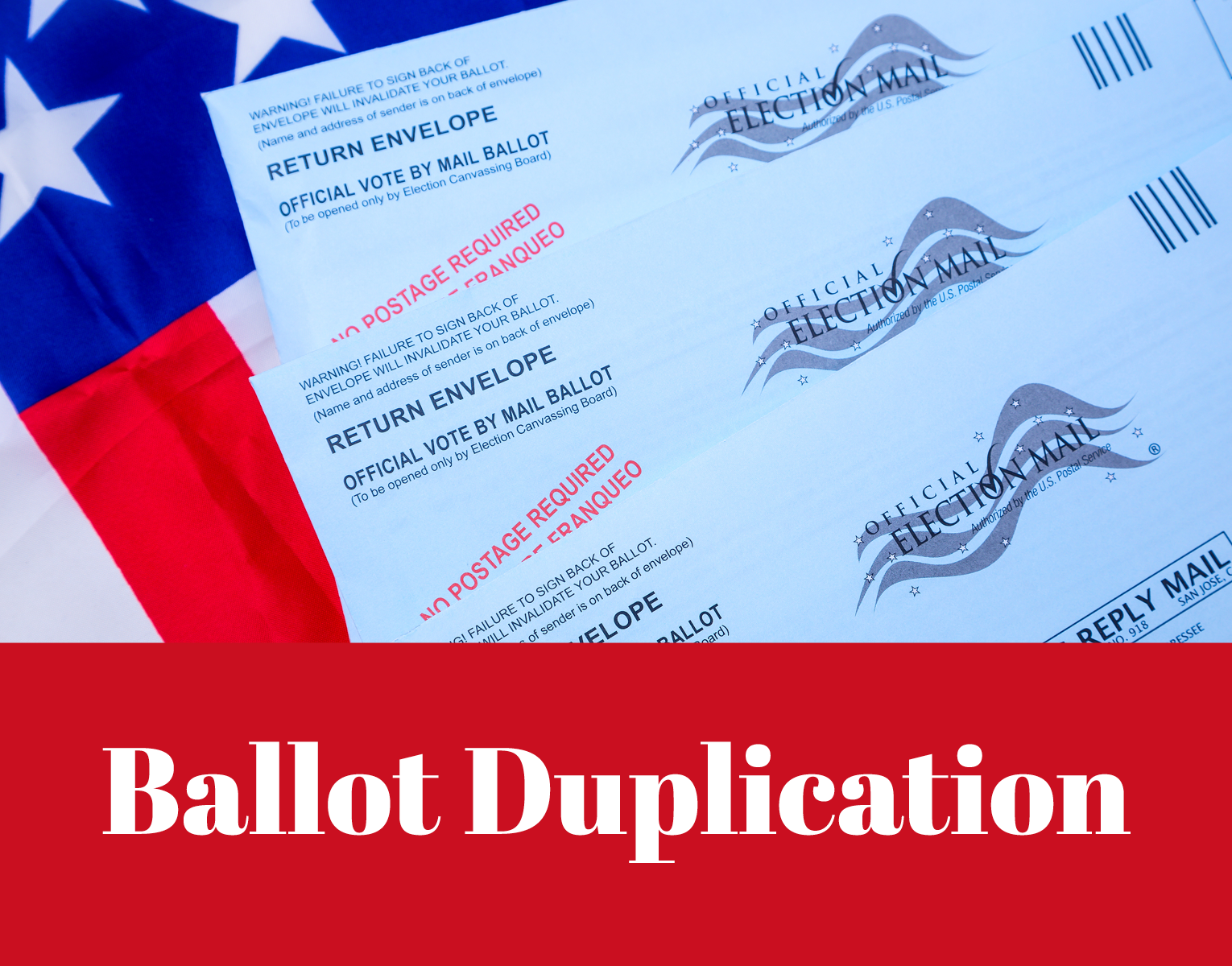The Council of State Governments (CSG) Overseas Voting Initiative (OVI) has been examining the November 3, 2020 election in relation to all things “ballot duplication” and sharing insights in our latest article series. We recently highlighted ballot duplication in the news followed by a look at poll watchers, observers and the ballot duplication process. In this third series installment, we’re providing an overview on the rollout of new ballot duplication technology by the office of the Orange County, California Registrar of Voters (ROV) following their research efforts to advance this process in one of the largest U.S. voting jurisdictions.
Background
For several years, Orange County ROV Neal Kelley and his team researched technology-aided solutions to help streamline the process for duplicating ballots marked outside of a polling place that may have become damaged or are otherwise unable to be read by vote tabulation scanners. Potential tools to partially automate the transcription of these ballots – including military and overseas ballots – were part of the overall election modernization effort. More importantly, continuous innovation better serves the jurisdiction’s voters while meeting the new requirements of the California’s Voter’s Choice Act of 2016. Orange County was mandated to reach compliance to this act in 2020.
In 2016, the ROV’s office issued a request for information (RFI) on several segments of election technology including voting systems, electronic pollbooks, and ballot duplication solutions. Following an in-depth review of the RFI responses received, the ROV’s office hosted an election technology fair with over 20 providers demonstrating their offerings in 2017. This allowed the ROV’s office to learn more about the latest election technologies available in the marketplace.
Around this time, the OVI Working Group, in which Orange County ROV Kelley participates, began its study of tools and processes to aid in ballot duplication. The OVI released its initial set of ballot duplication recommendations in January 2016, and an in-depth report on the group’s ballot duplication research in December 2016.
In early 2019, armed with robust election technology research outputs from their exhaustive work, the Orange County ROV’s office issued a request for proposals (RFP) for election technology solutions. They selected each type of desired technology and entered into contracts with providers to implement these solutions during the 2020 election cycle. Ballot duplication technology was just one of the many solutions procured by the ROV’s office, with Novus optical character recognition ballot duplication software from Runbeck Election Systems selected.
The ROV’s office gradually phased in the Novus software with its first small-scale test usage during the March 2020 primary with its legacy voting system. Use of the Novus software expanded significantly during the November 3, 2020 general election in conjunction with the implementation of their new voting system plus many additional election technologies and processes.
The 2020 general election was an extremely challenging time to implement any new technology, but the Orange County ROV’s office experienced great success. Over 1.54 million ballots were cast by Orange County during the November 3, 2020 election representing an 87.3% turnout, the second highest voter turnout percentage ever experienced in the county. To add even more service to voters due to the COVID-19 pandemic, the California Secretary of State’s office mandated that all registered voters automatically received a vote by mail (VBM) ballot from their county election office. Both in Orange County and throughout the state, this resulted in a significant increase in VBM ballots. Despite the large number of VBM ballots, COVID-19’s significant impact on election administration, and the introduction of a new voting system and additional election technology, Orange County ROV Kelley said 2020 was one of the smoothest elections ever in Orange County’s history.
How did the ballot duplication technology work?
With oversight from Orange County ROV office’s operators, the Novus software read each ballot needing duplication, then extracted a “clean” ballot in the same style from the ROV’s election definition software. The Novus software then replicated the original ballot, adding duplicate identification numbers on both the original and the replicated ballot in order to match the newly replicated ballot to the original. The ROV team operators then manually verified all ballot selections that the Novus software suggested. The duplicate ballots were then printed, matched, and checked for quality control.
How did the ballot duplication technology fare?
The Orange County ROV’s office conducted time and process studies to compare the new ballot duplication technology solution with traditional manual remaking of ballots. While not dramatically increasing through-put and time savings, time and staff-power was still saved, plus the addition of the ballot duplication technology resulted in a smoother, more efficient, and easier to track / easier to audit process. Improvement in transparency and chain of custody alone makes this solution critical to the Orange County ROV’s post-election processing.
To learn more about ballot duplication technology, please see our 2020 and 2021 article series and be on the lookout for our new OVI ballot duplication recommendations for election officials.


